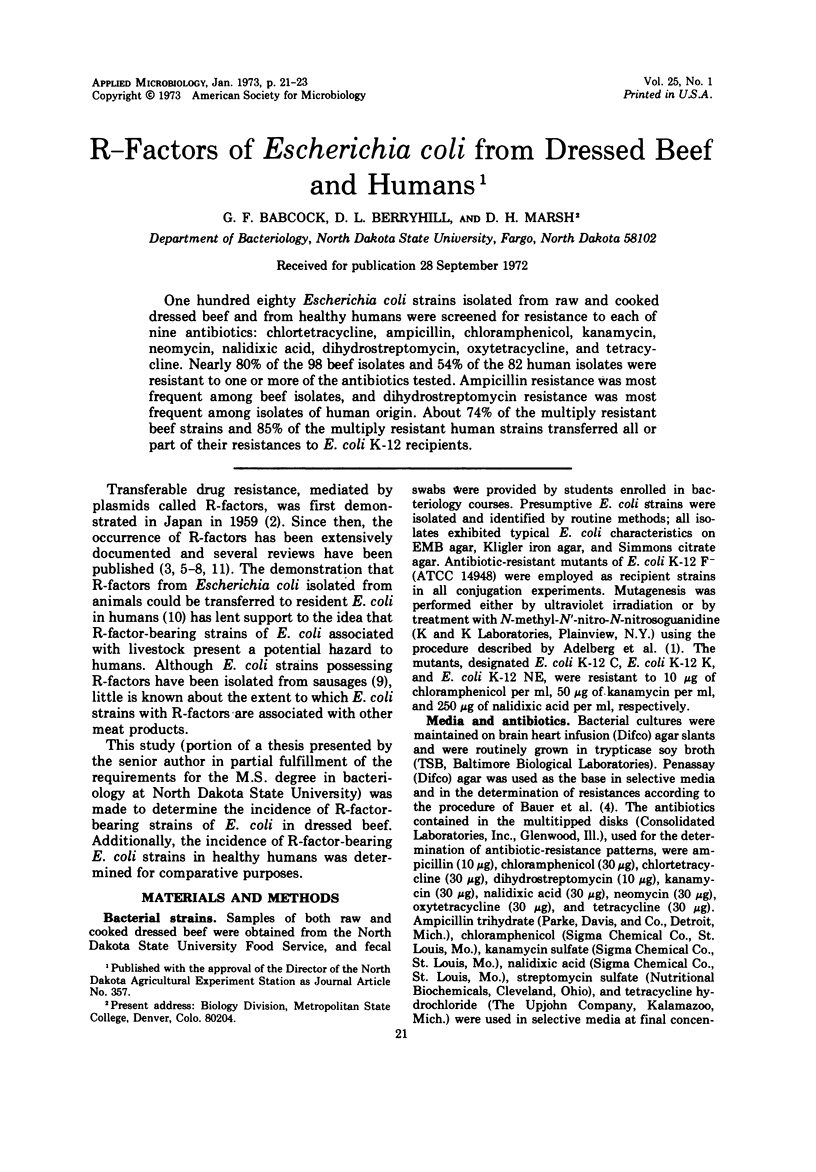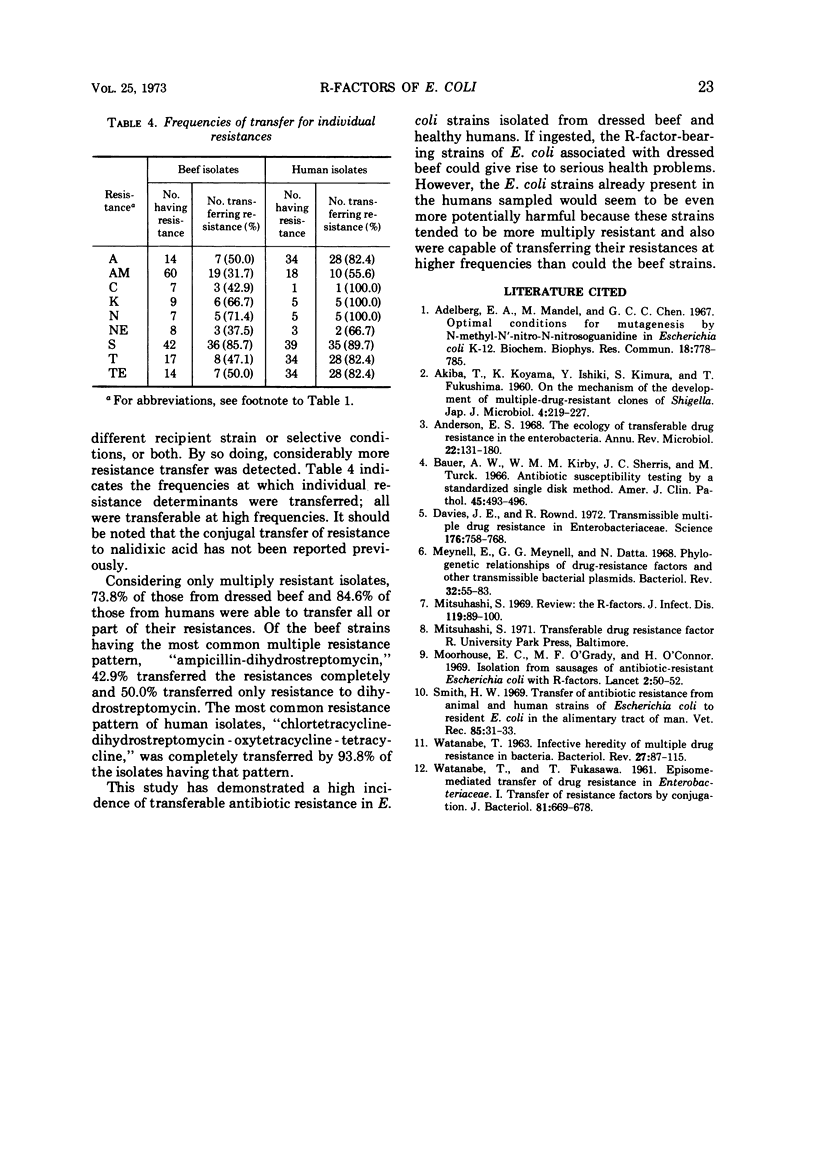Abstract
One hundred eighty Escherichia coli strains isolated from raw and cooked dressed beef and from healthy humans were screened for resistance to each of nine antibiotics: chlortetracycline, ampicillin, chloramphenicol, kanamycin, neomycin, nalidixic acid, dihydrostreptomycin, oxytetracycline, and tetracycline. Nearly 80% of the 98 beef isolates and 54% of the 82 human isolates were resistant to one or more of the antibiotics tested. Ampicillin resistance was most frequent among beef isolates, and dihydrostreptomycin resistance was most frequent among isolates of human origin. About 74% of the multiply resistant beef strains and 85% of the multiply resistant human strains transferred all or part of their resistance to E. coli K-12 recipients.
Full text
PDF


Selected References
These references are in PubMed. This may not be the complete list of references from this article.
- AKIBA T., KOYAMA K., ISHIKI Y., KIMURA S., FUKUSHIMA T. On the mechanism of the development of multiple-drug-resistant clones of Shigella. Jpn J Microbiol. 1960 Apr;4:219–227. doi: 10.1111/j.1348-0421.1960.tb00170.x. [DOI] [PubMed] [Google Scholar]
- Anderson E. S. The ecology of transferable drug resistance in the enterobacteria. Annu Rev Microbiol. 1968;22:131–180. doi: 10.1146/annurev.mi.22.100168.001023. [DOI] [PubMed] [Google Scholar]
- Bauer A. W., Kirby W. M., Sherris J. C., Turck M. Antibiotic susceptibility testing by a standardized single disk method. Am J Clin Pathol. 1966 Apr;45(4):493–496. [PubMed] [Google Scholar]
- Davies J. E., Rownd R. Transmissible multiple drug resistance in Enterobacteriaceae. Science. 1972 May 19;176(4036):758–768. doi: 10.1126/science.176.4036.758. [DOI] [PubMed] [Google Scholar]
- Meynell E., Meynell G. G., Datta N. Phylogenetic relationships of drug-resistance factors and other transmissible bacterial plasmids. Bacteriol Rev. 1968 Mar;32(1):55–83. doi: 10.1128/br.32.1.55-83.1968. [DOI] [PMC free article] [PubMed] [Google Scholar]
- Mitsuhashi S. The R factors. J Infect Dis. 1969 Jan;119(1):89–100. doi: 10.1093/infdis/119.1.89. [DOI] [PubMed] [Google Scholar]
- Moorhouse E. C., O'Grady M. F., O'Connor H. Isolation from sausages of antibiotic-resistant Escherichia coli with R factors. Lancet. 1969 Jul 5;2(7610):50–52. doi: 10.1016/s0140-6736(69)92614-2. [DOI] [PubMed] [Google Scholar]
- Smith H. W. Transfer of antibiotic resistance from animal and human strains of Escherichia coli to resident E. coli in the alimentary tract of man. Vet Rec. 1969 Jul 12;85(2):31–33. doi: 10.1136/vr.85.2.31. [DOI] [PubMed] [Google Scholar]
- WATANABE T., FUKASAWA T. Episome-mediated transfer of drug resistance in Enterobacteriaceae. I. Transfer of resistance factors by conjugation. J Bacteriol. 1961 May;81:669–678. doi: 10.1128/jb.81.5.669-678.1961. [DOI] [PMC free article] [PubMed] [Google Scholar]
- WATANABE T. Infective heredity of multiple drug resistance in bacteria. Bacteriol Rev. 1963 Mar;27:87–115. doi: 10.1128/br.27.1.87-115.1963. [DOI] [PMC free article] [PubMed] [Google Scholar]


